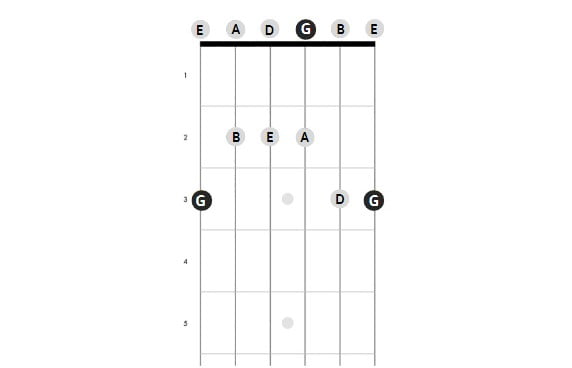How to Play the G Major Pentatonic Scale on Guitar
The G major pentatonic scale is a musical scale that can be heard in many popular songs, giving them a bright and versatile sound that can convey a powerful message. It is used in songs such as "Honky Tonk Women" by The Rolling Stones and "Wish You Were Here" by Pink Floyd. The G major pentatonic scale consists of seven notes that are found in the G major scale, with the fourth and seventh notes removed. This scale has no sharps or flats, making it easy for guitarists of all levels to learn and use. In this article, we will provide more information about the G major pentatonic scale, including the notes it contains and how to play it using charts and tablature. Let's get started!
NOTES ON THE G MAJOR PENTATONIC SCALE
The G major pentatonic scale, like other pentatonic scales, consists of five notes. It has a bright tone because it contains no sharps or flats. The notes that make up this scale are:
• G
• A
• B
• D
• E
Like all pentatonic scales, the G major pentatonic scale is made up of five notes that can also be found in the corresponding G major scale. The 4th and 7th notes, C and F# respectively, are removed from the G major scale to obtain the G major pentatonic scale. The notes G (root), B (3rd), and D (4th) form the G major triad chord.
G MAJOR PENTATONIC SCALE POSITIONS
There are multiple ways to play the G major pentatonic scale, but we will focus on playing it in the open position in this lesson. To start, position your finger on the 3rd fret of the low E string. The lesson will use a chart to teach you how to play the scale. These diagrams represent the fretboard of your guitar, with each dot indicating which note to play on a specific string and fret. If a dot has a note above the string, play that string in an open position. The dark dots on the chart represent the root of the scale, which is G in this case.
Open Position
To start playing the G major pentatonic scale in the open position, put your middle finger on the 3rd fret of the low E string. As you progress through the scale, you will notice that your index finger will play the 2nd fret of the next three strings, and your middle finger will play the 3rd fret of the last two strings, which are B and high E.

G MAJOR PENTATONIC SCALE TABS
There is more than one way to learn the G major pentatonic scale. Different guitarists may prefer different methods - some may find it easier to use charts like the one shown above, while others may prefer to learn using tablature. In the following lesson, we will show you how to play the same G major pentatonic scale using tablature.
There is more than one way to learn the G major pentatonic scale. Different guitarists may prefer different methods - some may find it easier to use charts like the one shown above, while others may prefer to learn using tablature. In the following lesson, we will show you how to play the same G major pentatonic scale using tablature.

The G major pentatonic scale is different from some pentatonic scales in that it does not require the use of your third (ring) or fourth (pinky) finger. This makes it easy to learn, and the G major chord and scale are among the most commonly used notes in the guitar world. Although you may play multiple notes across your fretboard, there are only five unique notes in the G major pentatonic scale, which you will notice when you listen to it. This is because as you continue ascending or descending the scale, you enter new octaves. The pentatonic scale begins with a G note on the low E string and by the sixth note (open G string), you've played G again, but in the next highest octave.
G MAJOR PENTATONIC SCALE EXERCISES
To master the G pentatonic scale, it is essential to practice playing it repeatedly in ascending and descending order. Start with the root note of G and play the notes A, B, D, E, and then another G in a higher octave. Then, play the notes in reverse order, starting with the higher G and moving back down to E, D, B, A, and low G. Practicing alternate picking while playing the scale can further enhance your skills and improve your picking techniques and musical ear. It's important to note that this is not the only way to play the G major pentatonic scale. There are other positions for this scale that take the action further down the fretboard. Experimenting with these other versions can help you improve finger dexterity and match notes at different points along the fretboard.
To learn even chords, songs, and musical theory, visit our Guitar tunio today








